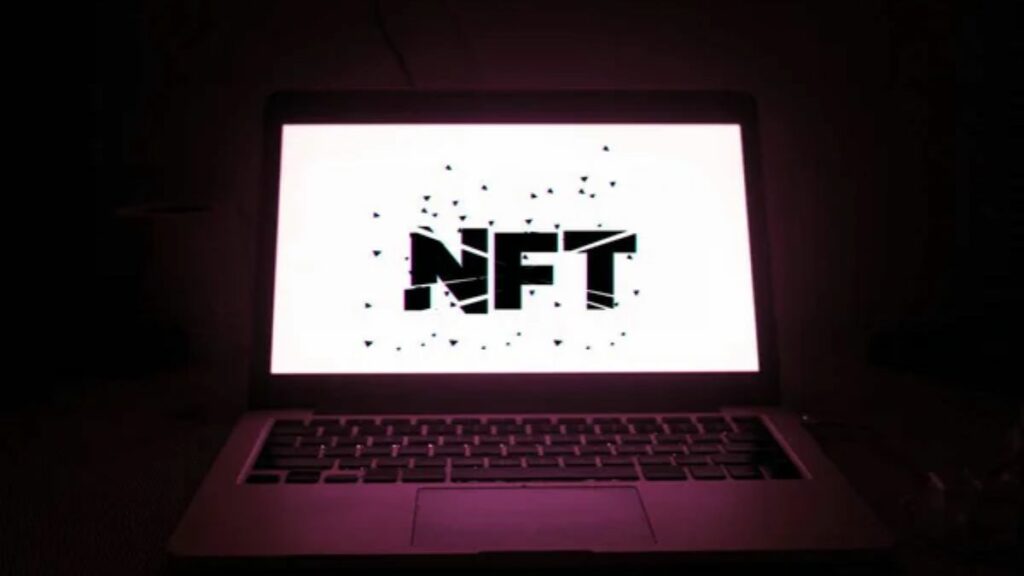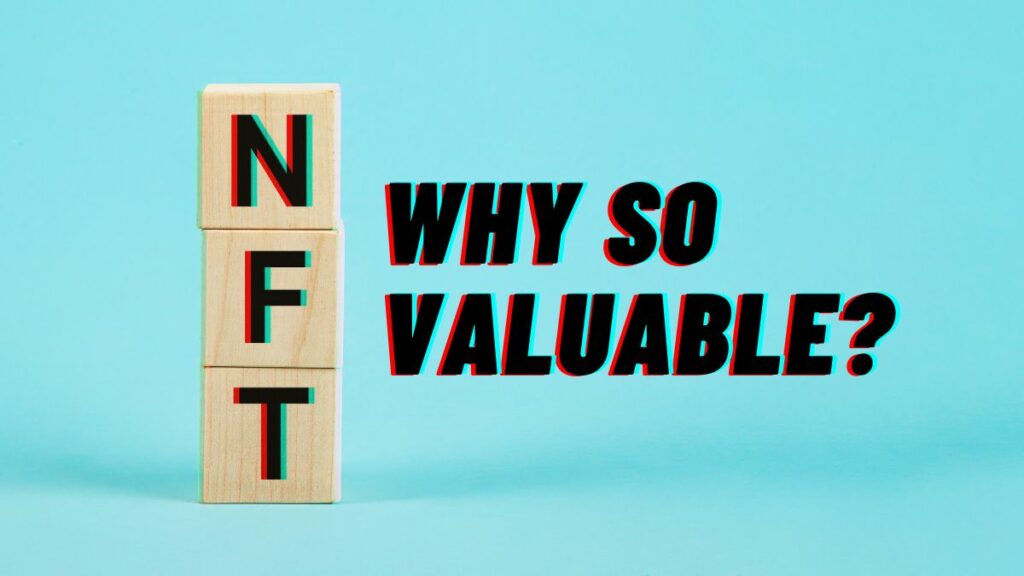This website and its content are not intended to provide professional or financial advice. The views expressed here are based solely on the writer’s opinion, research, and personal experience, and should not be taken as factual information. The author is not a financial advisor and lacks relevant certifications in that regard. We highly recommend consulting a qualified financial advisor before making any investment decisions, as the information presented on this site is general in nature and may not be tailored to individual needs or circumstances.
It’s no secret that digital assets are a trending topic in the digital finance world. NFTs, or Non-Fungible Tokens, are unique digital assets that can be traded and collected like physical art. They’re a trendy new investment that has left many wondering about their growth potential. In this blog post, we’ll take a closer look at what NFTs are, their history and growth in the market, and how they work so you can determine if they’re worth it or not.
Contents
What is an NFT?
NFTs, or non-fungible tokens, are unique digital assets that are stored on the blockchain. They represent ownership or proof of authenticity of a specific item or piece of content, such as art, video, music, or even tweets.

The blockchain serves as a decentralized digital ledger that offers secure and transparent verification of NFT ownership and transfer. This is accomplished through smart contracts, which are programmable codes written into the Ethereum blockchain. Smart contracts verify transactions between users and record the information in an immutable ledger, creating a permanent record of the NFT’s history and ownership.
NFTs are similar in some ways to cryptocurrencies like Bitcoin but differ in that they offer more flexibility in terms of how they can be used within an ecosystem. For example, an NFT could represent something as simple as ownership over an online game character or something as complicated as real estate investment funds (REIF). NFTs have gained popularity in the art and collectibles space due to their ability to provide a new way for creators to monetize their digital creations.
How Do NFTs Work?
NFTs are digital assets that can be transferred between users. They’re unique and cannot be replicated. It is stored on the blockchain and used to represent physical objects or intangible concepts.
In the same way, a physical piece of art or collectible is unique, and so is its digital counterpart. The difference is that NFTs are stored on a blockchain, a decentralized ledger that allows for a secure and transparent verification of ownership and transfer between parties. This is not only more efficient than traditional methods, but it also provides an opportunity to monetize digital content in a new way.
NFTs have gained popularity in the art and collectibles world, allowing creators to sell their digital creations without the need for intermediaries or third-party distributors. This allows for greater control over pricing and distribution, as well as more flexibility for artists who want to experiment with their audience’s perception of value by creating limited edition pieces that can be sold at higher prices than previous works.
Comparing NFTs and physical goods might be helpful to understand why NFTs differ. For example, suppose you own a rare baseball card that was first printed in 1910. You could sell it on eBay for $50,000 because it was hard to get and has been in good condition all these years. But there’s one problem: If your house burns down or someone steals it from you, there’s nothing stopping them from selling it for $50k on eBay as well!
But what if you took your baseball card and turned it into an NFT? Now, instead of having a physical object, your “baseball card” exists as code on the Ethereum blockchain—a permanent record of ownership that can’t be tampered with by anyone else. This means if someone tries to sell it on eBay without your permission, you’ll know right away because of this immutable ledger, and you can take action against them accordingly.
Why are NFTs So Valuable?

In the past few years, non-fungible tokens have become increasingly popular on the blockchain. NFTs are different from fungible digital assets like Bitcoin or Ethereum in that they can have a unique value based on their rarity and utility in the real world.
For example: if you own a rare Tron-themed avatar, you might want to sell it for top dollar because there aren’t very many avatars like yours out there.
NFTs have become increasingly valuable in recent years due to their scarcity and uniqueness. As they are stored on the blockchain, they offer a level of transparency and security that traditional collectibles cannot match. The ownership of an NFT is verifiable, ensuring that it is not an item that can be replicated. This makes them desirable to collectors and investors who are looking for new ways to diversify their portfolio.
Some of the most popular NFTs include:
- “Merge”, by digital artist Pak, sold for US$91.8 million on the NFT platform Nifty Gateway in December 2021.
- “The First 5000 Days” by Beeple sold for $69 million at a Christie’s auction in March 2021.
- “CryptoPunks” by Larson and Hall, a series of 10,000 unique characters. The most expensive character in the collection was sold for roughly $23.7 million in Ethereum in 2022.
- “HUMAN ONE” sold at Christie’s auction for US$28.985 million on 9 November 2021.
- “Kerb” by Beeple sold for $2.2 million.
These NFTs have sold for such high prices due to the reputation and popularity of their creators, as well as the uniqueness and scarcity of their designs. They have become highly sought after by collectors, leading to their increased value over time.
Which Crypto Platforms Support NFTs?
There are several popular cryptocurrency platforms that support NFTs (Non-Fungible Tokens). They include;
- Ethereum: Ethereum is often used as a platform for NFTs because of its smart contract functionality. NFTs built on Ethereum can be traded freely and securely on exchanges like Binance Smart Chain, Flow, and Polygon.
- Binance Smart Chain: Binance’s smart chain is designed specifically for trading NFTs. It integrates with Binance’s native wallet and allows users to buy and sell NFTs through an intuitive process and in a safe environment.
- Flow: Flow is an open-source protocol that allows developers to build decentralized marketplaces for digital goods using their own blockchain or other blockchains like Ethereum or Stellar. It also supports the trading of NFTs across different marketplaces using its own currency called FLS (Flow LSK).
- Polygon: Polygon is another open-source protocol that allows developers to launch their own marketplaces for digital goods using their own blockchain or other blockchains like Ethereum or
- OmiseGo(OMG): This platform provides a number of services, including payment processing and banking services for fiat currencies like USD or EURO. It also offers an exchange where you can trade with other cryptocurrencies as well as trade NFTs with fiat money using their debit card system called “OmiseGo Payment Gateway.”
The History of NFTs
NFTs have been around since at least 2017 when they were first introduced by CryptoKitties — an Ethereum-based game where users could buy, sell, and collect virtual cats named CryptoKitties. The game quickly became so popular that it slowed down Ethereum’s entire network due to congestion caused by thousands of users trying to access the platform at once.
Since then, NFTs have become more common on other platforms like Binance Smart Chain and Polygon, marking the beginning of the NFT craze and the recognition of NFTs as a new form of digital asset.
The concept of unique tokens caught the attention of game developers, artists, and collectors, who saw the potential for NFTs in their respective industries. In the last five years, the non-fungible token market has grown significantly. This trend is expected to continue as more companies explore new ways to use NFTs beyond gaming.
The popularity of NFTs has also led to the emergence of numerous blockchain-based games, such as Gods Unchained, CryptoAlpaca, CryptoBeasties, CryptoFighters, Sandbox, Decentraland, and more. These games have further cemented the role of NFTs as collectible tokens in the gaming industry.
How To Trade & Store NFTs?
There are two main ways to get your hands on an NFT: trading it directly from another person or purchasing them on an NFT marketplace like NFT Launchpad, OpenSea or Rarible.
Another way to trade NFTs is by using Ether (ETH). You can also purchase NFTs with fiat currency, but it’s not as convenient, and you will likely pay higher fees.
To trade NFTs, you need to have a wallet that supports ERC-721 tokens, which should be the case if you want to participate in the market.
There are several options for getting a wallet:
- MetaMask: MetaMask is a software wallet that allows you to interact with DApps directly from your browser. It’s free and intuitive, but with some limitations. For instance, it only supports Ethereum-based tokens and has limited functionality compared to other wallets, which makes it ideal for trading and storing NFTs because they are ERC-721 tokens.
- MyEtherWallet: This is another web-based wallet that supports ERC-20 tokens and ERC-721 tokens alike. It’s open source, so there’s no company behind it collecting data or charging fees like there is with MetaMask or Coinbase Wallet.
How To Sell an NFT?
To sell your NFT, you can go through an exchange or a decentralized marketplace. If you choose to use a decentralized marketplace, there will be fees associated with the transaction.
Selling on secondary markets is the strategy used by some traders and investors to achieve the desired price. There are other options, such as Rarible, Mintable, and Open Collectibles Marketplace, where users can buy/sell digital artworks using Bitcoin or Ethereum as payment methods.
5 Popular NFT Marketplaces
- OpenSea – OpenSea is the largest decentralized marketplace for digital collectibles, with thousands of assets available for purchase right now. It’s built on the Ethereum blockchain and allows users to buy, sell, or trade using their own ERC-721 tokens (ERC-20 tokens will also work).
- Rarible – Established in 2020, Rarible is a decentralized marketplace that offers one of the largest selections of high-quality NFTs.
- SuperRare – SuperRare launched in 2018 as the world’s first digital art market on Ethereum. It is an NFT market for aspiring digital artists and fine-art collectors.
- Nifty Gateway – Nifty Gateway is a digital art online auction platform for non-fungible token art. It is owned by the Winklevoss twins, who also founded Gemini.
- Foundation – NFT Showroom is a blockchain-based digital art marketplace that can help you simplify the process to create, collect, and trade rare digital art. It was founded in 2020.
Should You Invest In NFTs?
NFTs are still a new asset class, and there’s no clear answer to this question yet. Some people think the hype surrounding NFTs is overblown, while others believe that we’re still in the early days of mainstream adoption.
One thing they know for sure is that NFTs will continue to evolve and adapt to their users’ needs. It remains to be seen if they’ll be able to achieve widespread adoption or whether they’ll remain confined within niche communities.
Conclusion
With the market still growing, the risks of investing may outweigh the potential rewards at this time. Research can help the investor to assess risks and possible benefits of investing in NFTs.
StockHax strives to provide unbiased and reliable information on cryptocurrency, finance, trading, and stocks. However, we cannot provide financial advice and urge users to do their own research and due diligence.
Read More